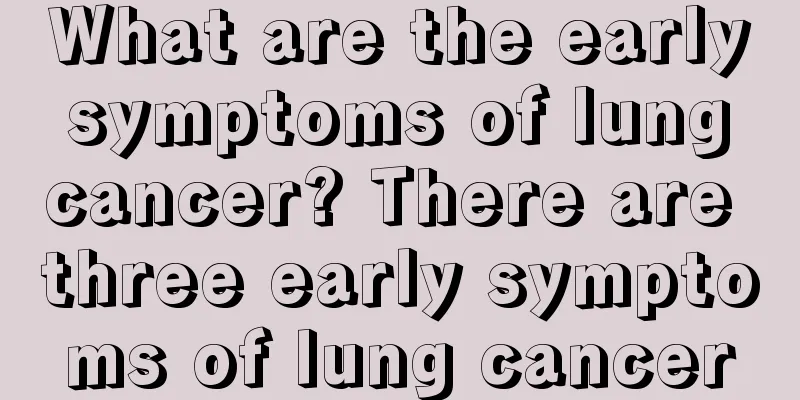What does chronic disease management of advanced lung cancer mean? How can patients with advanced lung cancer be effectively treated?

|
Lung cancer is one of the common malignant tumor diseases in oncology and thoracic surgery. Common causes include smoking, environmental pollution, tuberculosis, chronic lung inflammation, and family history. Common symptoms include cough, sputum, hemoptysis, chest pain, etc. Therefore, people with chronic lung disease, those who are often exposed to gas asphalt, and those who have the habit of smoking are the high-risk groups for lung cancer. Among them, smoking is the most important high-risk factor. At the beginning, the patient has no subjective symptoms. Only when it develops to the late stage will abnormal cough and sputum appear. Regarding the knowledge of advanced lung cancer, Zhou Chengzhi, chief physician of the First Affiliated Hospital of Guangzhou Medical University, is here to popularize it for us. What does chronic disease management mean for advanced lung cancer? Chronic disease management of advanced lung cancer is a method of controlling tumors with long-term medication. Currently, the emergence and application of targeted therapy or immunotherapy have prolonged the survival of lung cancer patients to a certain extent compared with the past, far exceeding 5 years. Therefore, patients need to use long-term medication to control tumors, which is similar to the treatment methods of some benign diseases, such as emphysema, hypertension, and diabetes. This is called chronic disease management of malignant tumors. How can patients with advanced lung cancer balance systemic and local treatments? How patients with advanced lung cancer can add targeted local treatment on top of systemic treatment can be divided into two situations: 1. When local symptoms are obvious and need to be improved through local treatment; 2. When systemic medication reaches a certain level and the lesions throughout the body are reduced after medication, especially when only lesions visible by imaging are left, local treatment methods can be used to achieve better therapeutic effects, targeting local treatment of the lesions. The clinical manifestations of lung cancer are closely related to the classification of lung cancer. Symptoms of central lung cancer appear early and are severe, while symptoms of peripheral lung cancer appear later and are milder, usually discovered during physical examinations. When it develops to the late stage, the patient will lose appetite due to factors such as infection and pain, and then develop severe systemic symptoms such as weight loss and cachexia. In order to prevent lung cancer from developing to the late stage and being incurable, high-risk groups should prevent and control exposure to high-risk factors such as smoking in their daily lives. |
>>: How to calculate early lung cancer? Introduction to the diagnosis method of early lung cancer
Recommend
What kind of underwear should I wear?
Girls still have a lot to pay attention to when c...
How can I heal the pimple I just squeezed as soon as possible
The causes of acne can be said to be very complic...
How to check blood viscosity
As we age, our bodies age, and our blood vessels ...
How to solve dry skin in autumn
Traditional Chinese medicine believes that since ...
What are the effects and functions of native chicken matsutake soup
Local chicken and matsutake soup is a great delic...
How to treat prostate cancer
Prostate cancer is a tumor caused by malignant pr...
To prevent and fight cancer, start by staying away from the delicious food on your tongue
What to eat to prevent cancer is a question that ...
Will semen affect the urine protein situation?
Many men will have a high urine protein index whe...
Explore the causes of rectal cancer
In life, many people suffer from gastrointestinal...
What are the high-risk factors for gastric cancer? Pay attention to these four points
Gastric cancer is a disease with a very high inci...
What are the advantages and disadvantages of bacteria
In the environment we live in, bacteria are every...
5 tips to relieve foot bone hyperplasia
For people who often need to stand at work or run...
How much does surgery for recurrent colorectal cancer cost
Colorectal cancer refers to a malignant lesion of...
Causes of impotence
The cause of impotence is unclear, because there ...
What to do if your hair is tangled and can’t be combed out
Women all hope that their hair has good quality a...









